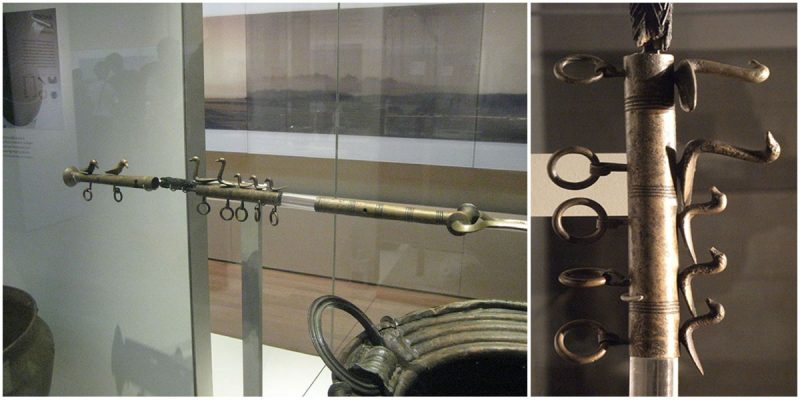The Dunaverney Flesh-Hook is a sophisticated prehistoric bronze artifact from Prehistoric Ireland, thought to be an item of ceremonial feasting gear, and a symbol of authority.
It dates from between 1050 and 900 BC, firmly within the Late Bronze Age and the most favored interpretation of its use is that it was used to remove chunks of meat from a stew in a large cauldron for serving. This probably belonged to a chief as a symbol of authority, especially at ritual feasts.
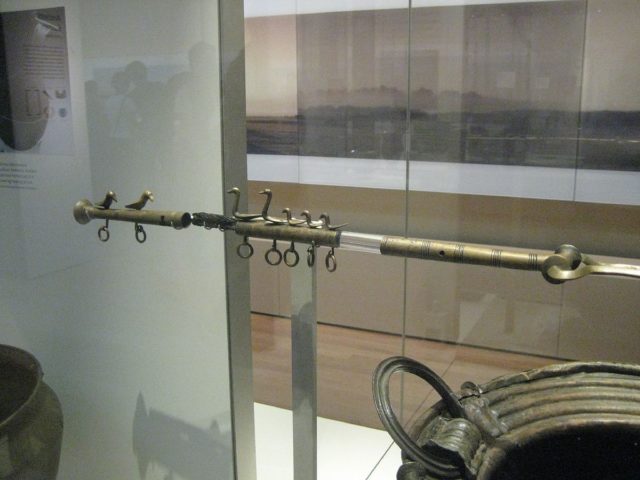
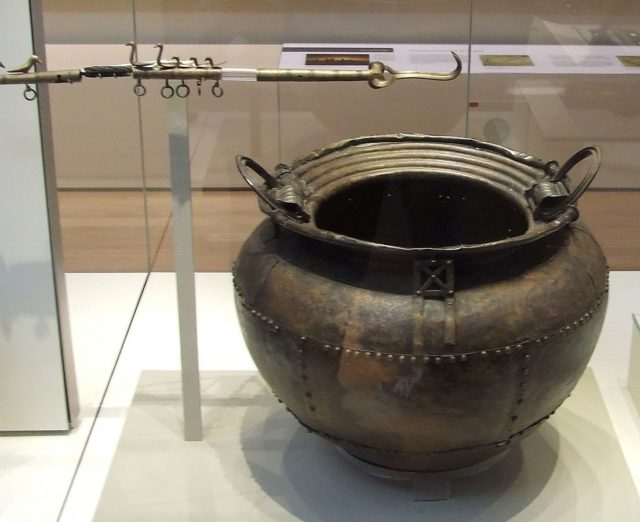
The hook was discovered in 1829 by workmen who were cutting turf at Dunaverney Bog to the north of Ballymoney, Co. Antrim, Northern Ireland.
At the time of its discovery, the Dunaverney Flesh-Hook was unparalleled to any other object, and for a long time, many experts could not agree on its age and function.
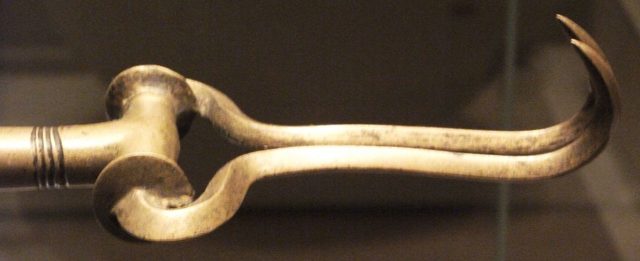
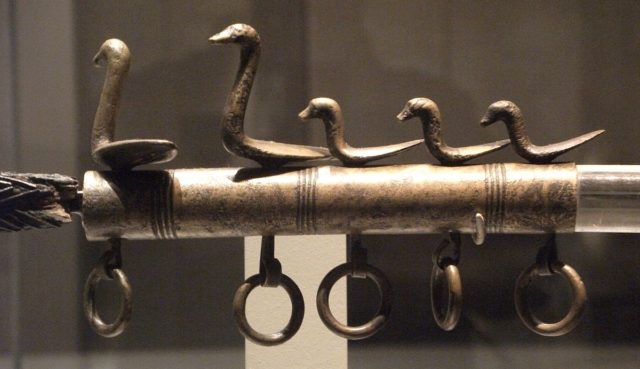
As more examples were found, experts were certain that they belonged to the Bronze Age and were clearly relevant instruments used during ceremonial feasts, carried by an individual of a very high status – possibly a Chieftain. However, some Bronze Age types are regarded as ritual objects, perhaps never actually used for a practical purpose.
The flesh-hook was initially linked by pieces of an oak shaft. It is the only late Bronze Age artifact from Ireland that exhibits a representational art style, in the form of bird figures which perch and swim along its length.
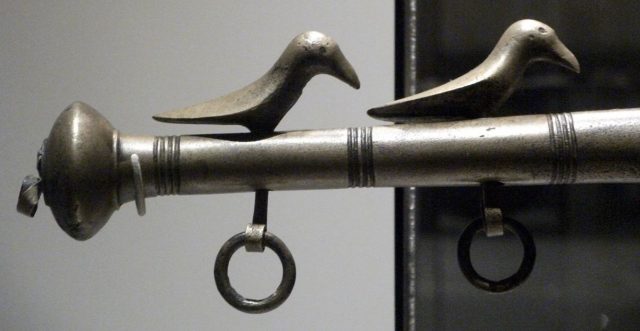
At the top of the artifact, there is a family of five birds, a pair of Swans with three cygnets. At the bottom of the shaft are two birds, identified as two corvids, possibly Ravens. The two sets of birds seem to invoke opposites: birds of water versus birds of the air.
Representations of birds are very rarely found in Irish archaeology, another feature that makes the Flesh-hook so remarkable. It was bought by the British Museum in 1856 and has remained there ever since.
